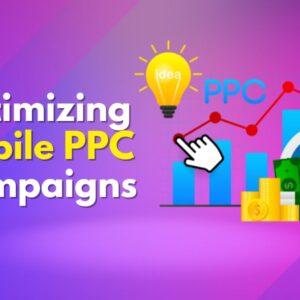Conversion tracking is an important component of any Google Ads campaign. By tracking conversions, you can measure the effectiveness of your ads and optimize towards actions that generate business value. In this comprehensive guide, I’ll walk you through how to properly set up conversion tracking in Google Ads to get the most out of your campaigns.
What is Conversion Tracking and Why is it Important?
Conversion tracking allows you to see what actions people take after clicking your ads. A conversion represents any desired outcome from your ads, such as a purchase, signup, lead, or download.
Without conversion tracking, you’re optimizing your campaigns blindly. You won’t know which ads, keywords, or landing pages are generating the most conversions. This makes it very difficult to enhance campaign performance over time.
With conversion tracking, you can:
- Conversion tracking shows you which ads, keywords, and landing pages get the most conversions. You can spend more on the parts that work well.
- Identify underperforming areas of your campaigns that need improvement.
- Unlock valuable bid strategies in Google Ads that automatically optimize for conversions.
- Calculate your return on ad spend.
Bottom line – conversion tracking transforms Google Ads from an awareness tool into a powerful money-making machine. It’s essential for running successful pay-per-click campaigns.
Setting Up Google Ads to Track Conversions
Setting up conversion tracking involves placing small tracking code snippets on your website. This allows Google Ads to detect and record conversions.
There are a few steps required to get it fully implemented:
1. Decide What Conversions to Track
Start by listing the valuable actions you want to track from your ads. Common conversions include:
- Purchases
- Leads
- Customers signing up
- Downloading content like ebooks
- Calls to your business
- Email list signups
- App installs
Prioritize 2-3 primary conversions that best indicate value to your business. Avoid going overboard and tracking every single action – that just dilutes your optimization efforts.
2. Add the Google Ads Conversion Tracking Tag
Next, copy the default Google Ads conversion tracking tag and add it to every page of your website. This enables basic conversion tracking capabilities.
Here are step-by-step instructions:
- In your Google Ads account, navigate to Tools > Conversion tracking.
- Under “New Tag,” choose Website.
- In the conversion tracking tool, select “Add default tag for purchases” and click Continue to move forward.
- Copy the tracking code snippet.
- Paste the code immediately before the closing </head> tag on every page of your website.
This default tag will track purchases from your website checkout pages.
3. Set Up Conversion Tracking for Specific Actions
Beyond the default purchase tag, you can create unique conversion tracking tags for other valuable actions like leads and signups.
Here’s how:
- In the conversion tracking tool, click +New.
- Select the type of conversion you want to track such as Lead or Signup.
- Name your conversion to identify it easily.
- Click Create and Continue.
- Copy the new tracking snippet.
- Paste it on the appropriate pages where this conversion occurs.
For example, paste the lead tracking code on your contact or lead capture pages.
Repeat this process for each conversion you want to track.
4. Add Offline Conversion Tracking
If you have conversions happening offline, you can track these too. Offline conversions include phone calls, walk-in visits, and mail orders.
To track offline conversions:
- In the conversion tracking tool, click +New.
- Select Offline Conversion > Calls, Store visits, or Mail/fax orders.
- Provide info like conversion name, category, and value.
- Click Create and Continue.
No coding is required. Google will estimate the number of offline conversions based on your ads data.
5. Integrate Call Tracking Software
For the most accurate phone call tracking, use a call analytics platform like CallRail or CallTrackingMetrics. These services provide phone call tracking numbers to dynamically insert in your ads.
When someone calls that number, the call data syncs back with Google Ads so you can see exactly which keywords and ads generated calls. This is hugely valuable for optimizing high-intent keywords.
Most call-tracking software integrates directly with Google Ads. Just follow the setup steps in your chosen platform.
6. Send Conversion Data to Google Ads
If you already have analytics or CRM platforms measuring conversions, you can import this data directly into Google Ads for reporting.
Popular tools like Google Analytics, Mixpanel, Segment, and Salesforce all have options to push conversion events into your Google Ads account.
Simply connect your analytics platform and enable the integration in Google Ads. This prevents you from needing duplicate tracking snippets on your site.
Google Ads Conversion Tracking Tips
Here are some pro tips for setting up conversion tracking that drives results:
- Track micro-conversions like email signups and content downloads in addition to big conversions. This gives you more signals to optimize.
- Prioritize high-value conversions by assigning monetary values. Google will optimize for the conversions that have the biggest impact.
- Test different bidding strategies like Target CPA and Maximize Conversions once you have conversions flowing. Leverage Google’s machine learning to scale performance.
- Break down conversions by campaign, ad group, keyword, and ad. See which message angles and entry points resonate most with your audience.
- Analyze conversion rates and tweak underperforming parts of your funnel. Removing friction can significantly lift conversions.
- Use negative keywords to stop showing ads to people unlikely to convert based on their searches. Save your budget for qualified prospects.
The Path to Conversion Optimization
Implementing conversion tracking in Google Ads provides the crucial data foundation for optimization. You gain visibility into your best-converting keywords, ads, and landing pages. This allows you to double down on what’s working and fix what’s underperforming.
With conversion tracking, you can leverage advanced bid strategies, landing page testing, and negative keywords to scale campaign performance over time. Conversions ultimately determine the success and ROI of your Google Ads campaigns. Conversion tracking brings you one step closer to full optimization.
Hopefully, this guide provides a helpful overview of how to set up proper conversion tracking in your Google Ads account and start driving better results.









